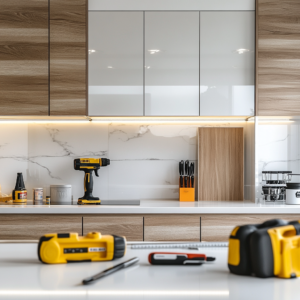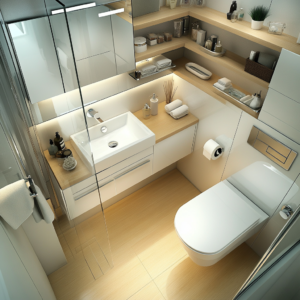DIY Renovation Tips
For DIY renovations tips with a mechanical engineering mindset, every project combines precision and durability. Start with a detailed plan using CAD software to minimize errors, and select materials for their strength, like stainless steel or engineered wood, to ensure lasting quality. For heavy installations, calculate support placement to maintain structural integrity, while plumbing projects benefit from correct pressure calculations to prevent leaks. Apply noise reduction techniques with sound-dampening materials, and enhance energy efficiency by optimizing lighting and airflow in HVAC systems. Embrace simple engineering tricks like the lever principle for moving heavy objects, and prioritize safety by calculating load limits on ladders and scaffolding. These tips make every renovation a blend of efficiency, safety, and durability.

All DIY Renovation Tips

A Complete Guide on How to Install Kitchen Cabinets

Bright Ideas: Expert Tips for Upgrading Home Lighting on a Budget

How to Paint a Room Like a Pro | Expert Tips for Perfection

How to Install New Flooring: Step-by-Step Guide for Beginners

Smart Design Tips for Renovating a Small Bathroom on a Budget

How to Remodel a Kitchen on a Budget: Tips for a Stunning Makeover
Plan Your Renovation Thoroughly
Before diving into any mechanical renovation, it’s essential to plan every aspect of the project. Start by evaluating the condition of your current system, machine, or equipment. Identify the issues that need to be addressed and set specific renovation goals. A clear plan will not only guide your renovation but also ensure that you stay on track, avoiding unnecessary errors or delays. This will also allow you to estimate the required materials and time, so you’re fully prepared for the project.
Enhance Structural Integrity
For mechanical structures such as frames, supports, or industrial machinery, ensuring structural integrity is vital. During the renovation, inspect the load-bearing parts and replace any materials that may have weakened over time. Upgrade to stronger materials such as reinforced steel or advanced composites to enhance durability and load distribution. Strengthening the overall structure of your equipment or system will ensure safety and reliability, especially in high-stress applications.
